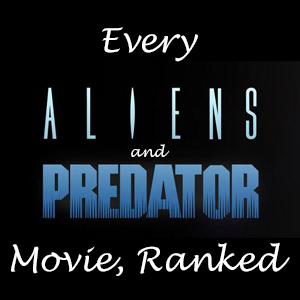Denis Villeneuve’s “Dune: Part One” (HBO Max), adapting the start of Frank Herbert’s 1965 novel, is more like homework than entertainment. But it’s not entirely unappealing homework. As with 2017’s “Valerian and Laureline,” I found it neat to see a big-budget, big-screen depiction of George Lucas’ “Star Wars” influences.
‘Star Wars’ connections
The action – well, action isn’t the right word, but the, um, narrative – begins on a sand planet (Arrakis, shot in the Middle East). It features sand people (Fremen) and two globes in the sky (they appear more like planets than suns here). Instead of mining water like on Tatooine, spice mining (like on “Star Wars’ ” Kessel) is how the big bucks are made on Arrakis. (Although water is treasured, too.)
More “Star Wars” comparisons come in big ways: Paul Atreides (Timothee Chalamet) gets early Force training, and he’s obviously the Chosen One, although people debate it. And in small ways: When Paul and his mother (Rebecca Ferguson) exit their downed craft on a sand dune after flying through a sandstorm, a wide shot resembles the droids’ crashed escape pod.
“Dune” (2021)
Director: Denis Villeneuve
Writers: Denis Villeneuve, Jon Spaihts, Eric Roth (screenplay); Frank Herbert (novel)
Stars: Timothee Chalamet, Rebecca Ferguson, Oscar Isaac
As we know to expect after “Blade Runner 2049” and “Arrival,” Villeneuve (who co-writes with Jon Spaihts and Eric Roth) is in no rush. The first hour includes no action scene, even when it could have: Jason Momoa’s Atreides warrior tells of fighting Fremen before they learned to trust him.
The budget goes to production-design porn. In space-adventure epics I’ve liked through the years, I sometimes pick up the “Art of” book to pour over the frames. There’s no need here, because Villeneuve lingers. That’s one way “Dune” is the opposite of Lucas’ films: It’s unapologetically languid.
Bleak people and places
Unfortunately, all four planets we see are bleak as hell. The other three are the Atreides planet, founded on royal ceremonies; and the Harkonnen planet and Imperial planet, both grimly war-centered. We don’t see vibrant communities of happy people. Or even workaday living people – the Freman represent this, but they’re mostly off-screen until Paul’s initiation fight that closes the film.
Unlike with “Star Wars” and “Valerian,” I found “Dune” short on emotion and characters to embrace. Villeneuve tries: The relationship between father (Oscar Isaac) and son is warm; the dad even says he only needs Paul to be his son, nothing more – unusual for a throne-succession drama. Paul’s friendship with Momoa’s warrior features the requisite back-slapping.

And Paul dreams of beautiful blue-eyed Freman woman Chani (Zendaya), whose sparse screentime is like a tantalizing drop of water on Arrakis. Recalling the Anakin-Padme romance, Chani is Paul’s soulmate because she’s 1, beautiful, and 2, the only woman (roughly) his age that he’s ever seen.
For what it’s worth, the exposition is clearly laid out. The Emperor – like Palpatine in the “Star Wars” prequels, but he’s off-screen here – is engineering a galactic war with Arrakis as the flashpoint.
He’s even less subtle than Palpatine. In this corporatist system, he simply takes the Arrakis spice monopoly away from House Harkonnen and gives it to House Atreides. He knows war will ensue (an epic early battle fills “Dune: Part One’s” back half), and presumably he will then further increase his power.
Are there any good guys?
“Dune’s” distance from the viewer comes in part from the lack of good guys. Everyone we focus on is an imperialist to different degrees. Even House Atreides is to the Fremen what the Americans were to the Indians, after the British left.
The point, I suppose, is that Paul will discover the idea of rebellion from the Freman as the story goes on. I submit that Luke Skywalker is more appealing because he doesn’t need to discover a sense of right and wrong. He only needs a nudge.
Anyone’s review of “Dune” will be a litmus test for their own taste. In a college SF class, Herbert’s doorstop was the only book I couldn’t get through. I’m exhibiting a clichéd need here, but a likable, relatable protagonist is important to guide me.
Chalamet is a blank slate for writers to put their protagonist on to; he doesn’t bring much on his own other than a pretty face. I liked him in “A Rainy Day in New York,” where he’s delivering Woody Allen dialog. But Herbert’s and Villeneuve’s Paul Atreides is not the down-to-earth or charismatic character I desire to lead me through this adventure.
Chani could be, but she’s a cipher in the first 2.5 hours. “Part Two” will likely pay things off, and possibly redeem this introductory chapter for those of us who weren’t bowled over.
But judged as a standalone work, watching “Dune: Part One” is like trudging through mounds of sand.
IMDb Top 250 trivia
- “Dune” places No. 139 with an 8.2 rating, making it Villeneuve’s top film in the IMDb rankings, although “Prisoners” (8.1, No. 191) and “Blade Runner 2049” (8.0) are close.
- Curious where other sandy epics place? “Star Wars” is at No. 25 with an 8.5, “Raiders of the Lost Ark” is at No. 55 with an 8.4, and “Lawrence of Arabia” is at No. 102 with an 8.3. “Rambo III” is off the chart with a 5.8.
- David Lynch’s 1984 “Dune” adaptation rates a 6.4.

